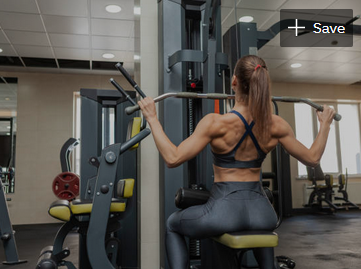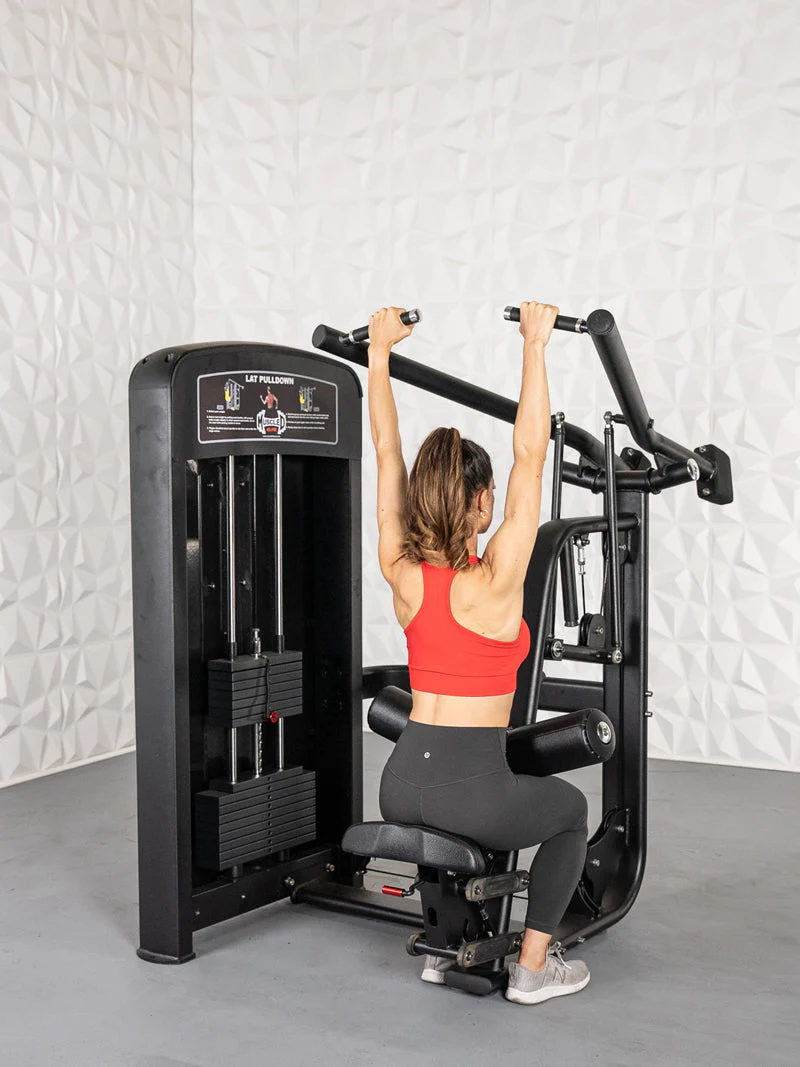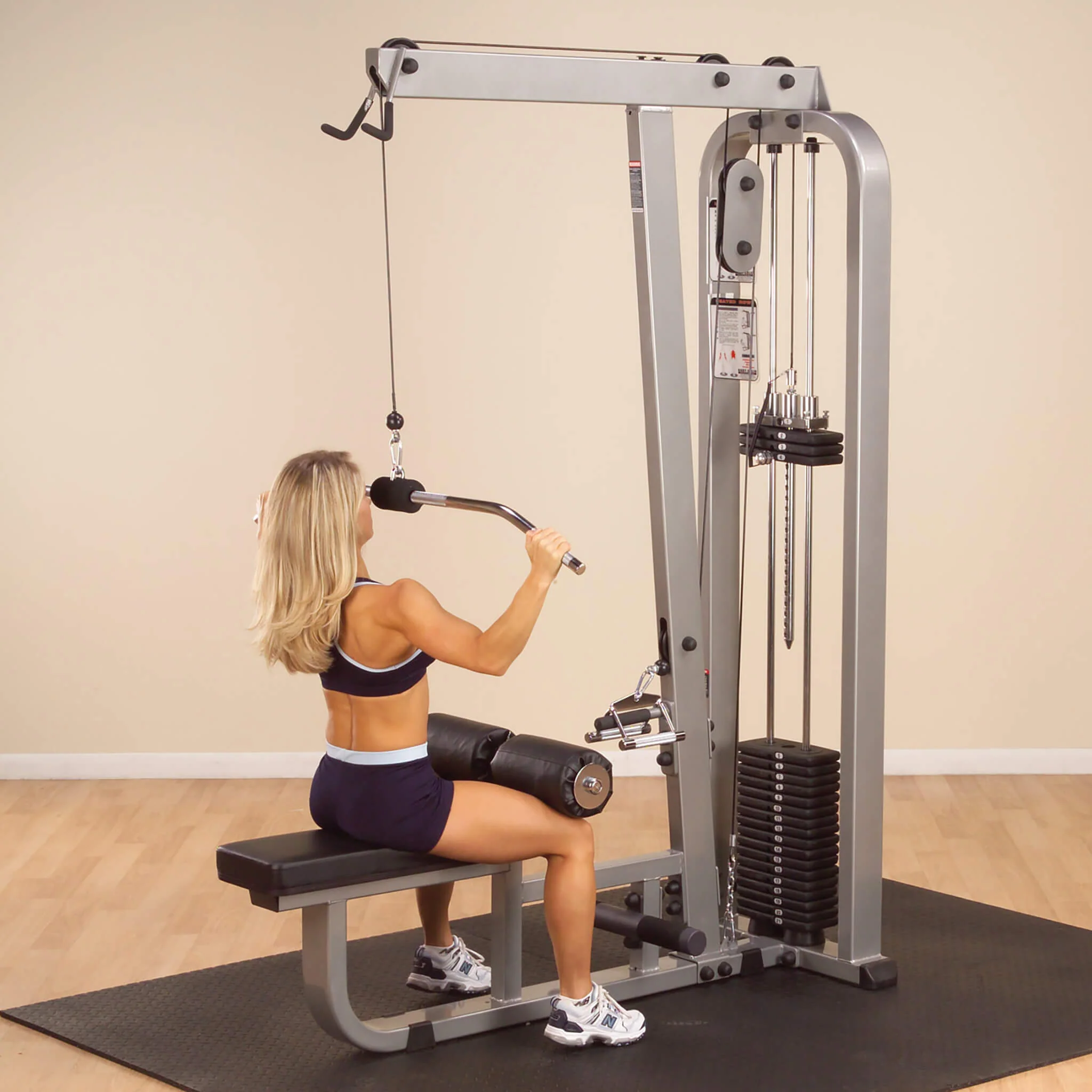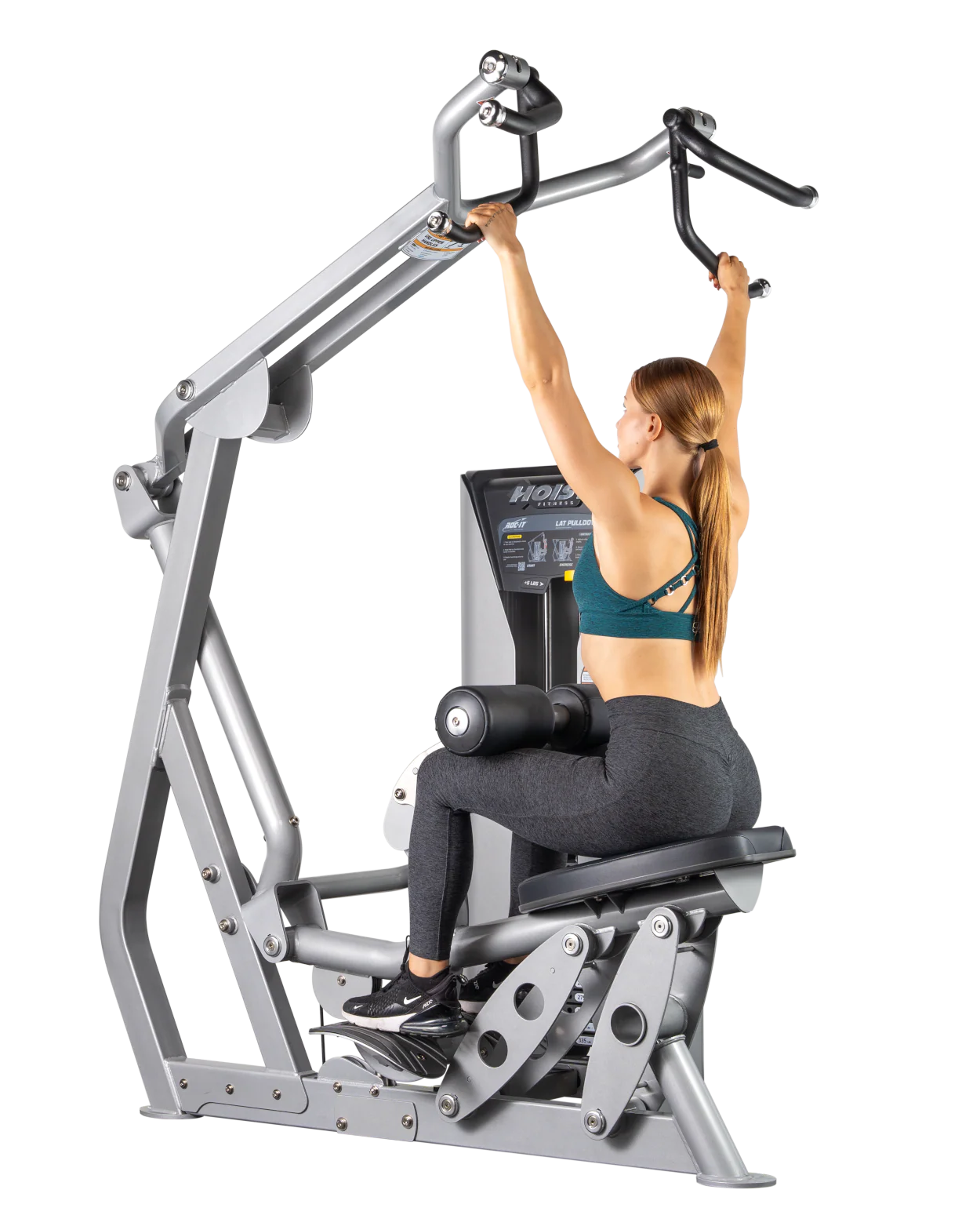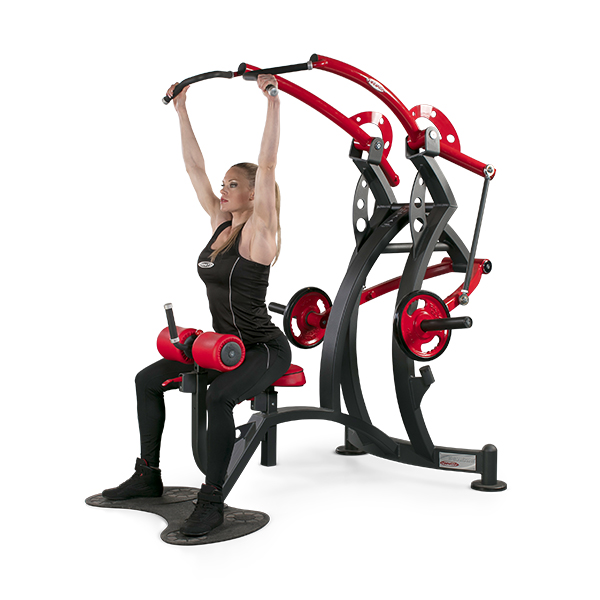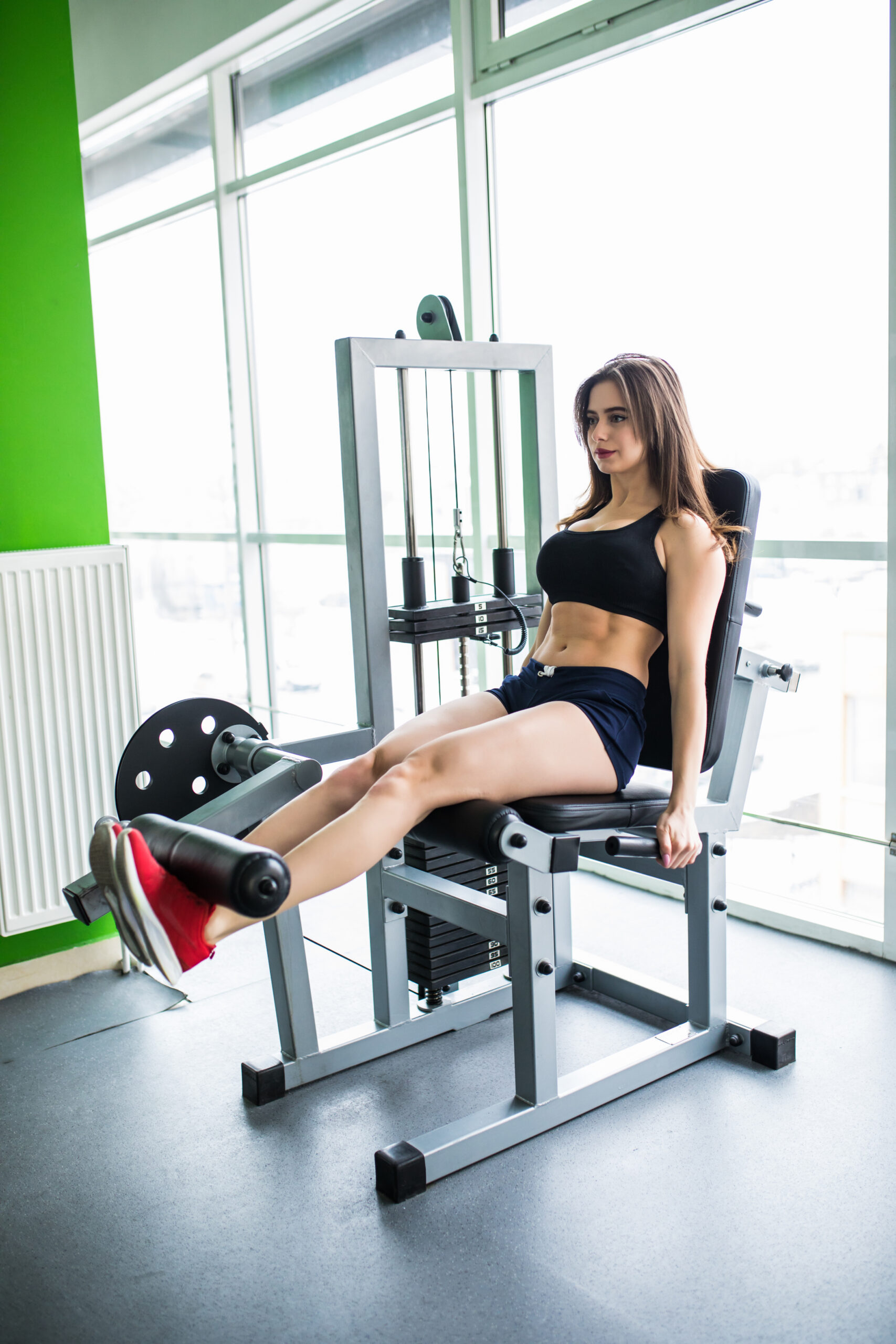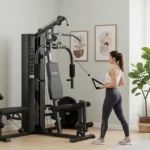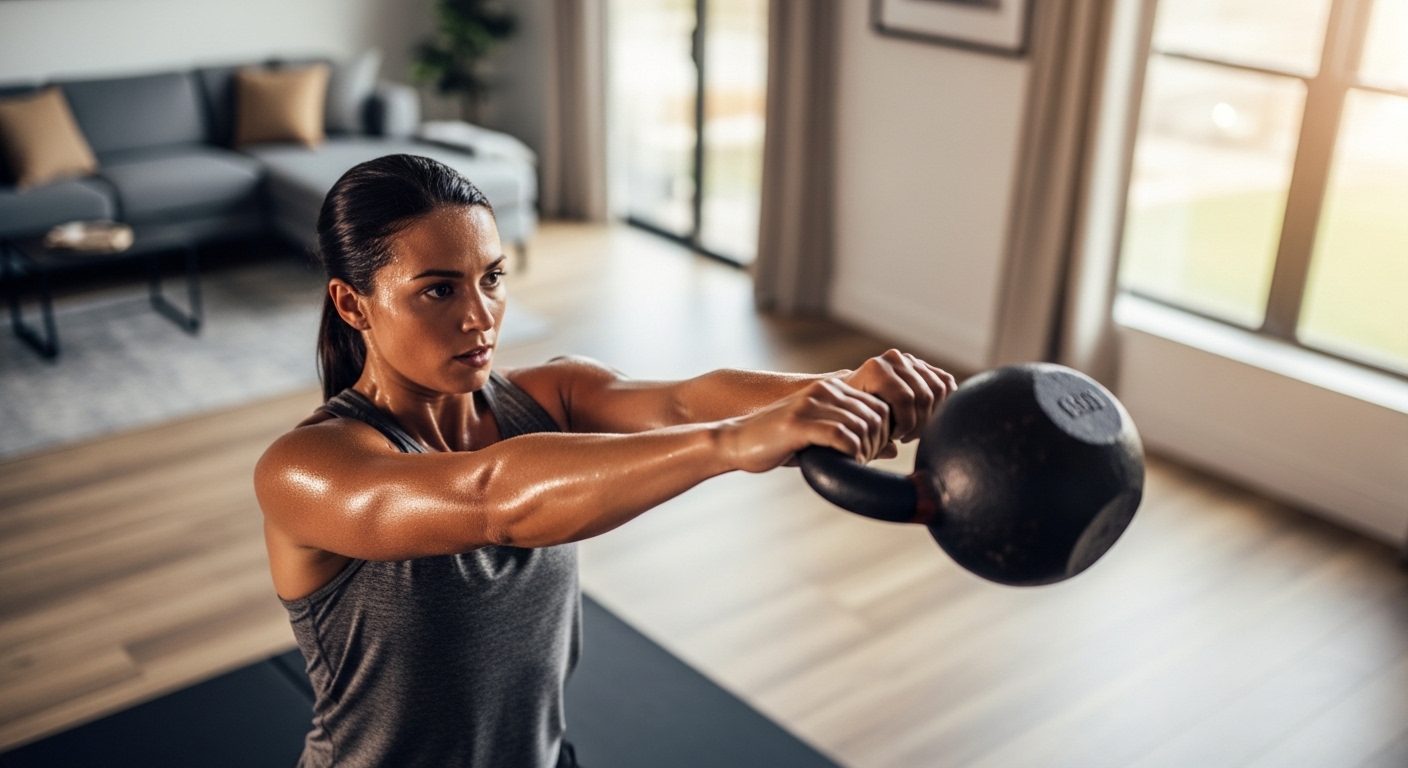By Jodie Carter, Certified Personal Trainer (REPS Level 3) & Home Gym Specialist | Last Updated: July 2025
Starting your fitness journey can feel overwhelming, especially when you’re trying to build back strength but can’t manage a single pull-up. Here’s where the lat pulldown machine becomes your best friend. This versatile piece of equipment allows you to target the same muscles as pull-ups but with complete control over the resistance, making it perfect for beginners who want to build a strong, defined back safely and effectively.
Whether you’re setting up a home gym or considering joining a local fitness centre, understanding how lat pulldown machines work will transform your back training. This comprehensive guide will walk you through everything you need to know about lat pulldown machines, from basic operation to creating your first workout routine.
What is a Lat Pulldown Machine?
A lat pulldown machine is a cable-based resistance training device specifically designed to target your back muscles through a vertical pulling motion. The machine consists of a high pulley system, adjustable weight stack, padded seat, and thigh restraints that keep you securely positioned during exercise.
Basic Components and How They Work
The lat pulldown machine operates on a simple yet effective pulley system:
- High pulley: Positioned overhead to create the proper angle for lat muscle activation
- Weight stack: Adjustable resistance typically ranging from 10kg to 100kg or more
- Cable system: High-quality steel cables that connect the weight stack to the pulldown bar
- Seat and thigh pads: Provide stability and proper positioning during exercise
When selecting equipment for your home gym, consider reading our comprehensive expert lat pulldown machine reviews to find the best model for your needs and budget.
Types of Lat Pulldown Machines
Seated Lat Pulldown Machines: The most common type found in UK gyms and homes. These machines feature a comfortable seat with thigh restraints, making them ideal for beginners who need stability while learning proper form.
Standing Lat Pulldown Stations: Less common but excellent for functional training. These require more core engagement but may be challenging for absolute beginners.
Cable-based Multi-stations: Versatile systems that allow lat pulldowns plus numerous other exercises. Popular in UK home gyms due to space efficiency.
For first-time buyers, our detailed buyers guide for beginners provides expert recommendations based on space, budget, and training goals.
Benefits of Using a Lat Pulldown Machine for Beginners
The lat pulldown machine offers unique advantages that make it superior to other back exercises for newcomers to fitness.
Safer Alternative to Pull-ups
Most beginners cannot perform a single proper pull-up, which can be discouraging and potentially dangerous. According to NHS guidelines on strength training, beginners should start with controlled movements they can perform safely with proper form.
Many beginners wonder about the effectiveness of lat pulldowns compared to pull-ups. Our detailed analysis of lat pulldown machine vs pull-ups explains why lat pulldowns are often the better starting point for building the strength needed to eventually perform pull-ups.
Adjustable Resistance for Progressive Training
Progressive overload is essential for muscle growth and strength development. The lat pulldown machine makes this simple:
- Week 1-2: Start with 20-30% of your body weight
- Week 3-4: Increase by 2.5-5kg increments
- Month 2: Progress to 40-50% of body weight
- Month 3+: Continue adding weight as strength improves
Muscles Worked by Lat Pulldown Machines
Understanding which muscles you’re targeting helps you focus on proper form and maximize results.
Primary Muscles: Latissimus Dorsi
The latissimus dorsi are the large, wing-shaped muscles on either side of your back. These muscles are responsible for:
- Pulling your arms down and back towards your body
- Creating the coveted “V-shaped” torso
- Improving posture by counteracting rounded shoulders
- Supporting functional movements like climbing and lifting
Secondary Muscles
Biceps: Located on the front of your upper arms, these muscles assist in the pulling motion.
Rhomboids: Small muscles between your shoulder blades that help retract and stabilize your shoulders.
Rear Deltoids: The back portion of your shoulder muscles, crucial for maintaining shoulder health and posture.
How to Use a Lat Pulldown Machine (Step-by-Step)
Proper technique is crucial for safety and effectiveness. Follow this detailed guide for perfect lat pulldown form.
Setting Up the Machine Properly
- Adjust the thigh pads: Set them to a height where they rest comfortably on your thighs when seated
- Select appropriate weight: Start with 15-20kg if you’re completely new to exercise
- Check the pulley system: Ensure cables move smoothly and attachments are secure
- Position the seat: Some machines have adjustable seats – set it so you can reach the bar comfortably
Correct Sitting Position and Posture
- Sit with your back straight against the pad
- Plant feet firmly on the floor, shoulder-width apart
- Engage your core muscles to maintain stability
- Keep your chest up and shoulders back
- Maintain a slight arch in your lower back
The Perfect Pulldown Motion
Starting Position:
- Arms extended overhead with a slight bend in elbows
- Shoulders relaxed, not hunched up
- Core engaged and back straight
The Pull:
- Initiate the movement by pulling your shoulder blades down and back
- Drive your elbows down and slightly behind you
- Pull the bar to your upper chest, around collarbone level
- Squeeze your lats at the bottom of the movement
The Return:
- Slowly control the weight back to starting position
- Take 2-3 seconds for this eccentric phase
- Don’t let the weight stack crash down
- Maintain tension throughout the entire range of motion
For a complete collection of movement variations and progressions, explore our guide to the best lat pulldown machine exercises for beginners.
Common Beginner Mistakes to Avoid
Using Too Much Weight Too Soon
The Problem: Ego lifting leads to poor form and potential injury.
The Solution: Start with a weight that allows 12-15 controlled repetitions with perfect form. You should feel challenged on the last 2-3 reps but still maintain proper technique.
Poor Form and Compensatory Movements
Common mistakes include:
- Leaning back excessively to “help” the weight down
- Using legs to bounce and create momentum
- Pulling the bar behind the neck (dangerous for shoulders)
- Allowing shoulders to roll forward during the movement
Neglecting the Negative (Eccentric) Phase
Many beginners focus only on pulling the weight down and let it slam back up. The controlled return phase is equally important for muscle development and should take 2-3 seconds.
Getting Started: Your First Lat Pulldown Workout
Choosing the Right Starting Weight
- For women: Start with 10-15kg and adjust based on comfort
- For men: Begin with 15-25kg and modify as needed
- General rule: Select a weight that allows 12-15 perfect repetitions with the last 2-3 feeling challenging
Beginner Rep and Set Recommendations
Week 1-2:
- 2 sets of 10-12 repetitions
- Rest 60-90 seconds between sets
- Focus entirely on form, not weight
Week 3-4:
- 3 sets of 10-12 repetitions
- Rest 60-90 seconds between sets
- Increase weight by 2.5kg if you can complete all reps easily
For those ready to commit to long-term progress, consider following our structured 8-week lat pulldown workout plan for beginners that systematically builds strength and muscle.
Frequency and Rest Days
Train your back with lat pulldowns 2-3 times per week, allowing at least 48 hours between sessions. This gives your muscles time to recover and grow stronger.
Safety Tips for Lat Pulldown Machine Use
Pre-Workout Machine Inspection
Before each use, quickly check:
- Cables for fraying or damage
- Weight stack moves smoothly
- Seat and pads are secure
- All pins and attachments are properly fastened
Proper Warm-up Exercises
Never start with cold muscles. Spend 5-10 minutes warming up with:
- Light cardio (walking, stationary bike)
- Arm circles and shoulder rolls
- Cat-cow stretches for spinal mobility
- Light resistance band pull-aparts
When to Ask for Help
Don’t hesitate to ask gym staff or a qualified trainer for assistance if:
- You’re unsure about machine setup
- You experience any pain during the movement
- You need a form check
- You want to progress to heavier weights safely
Expert Recommendations
As a REPS Level 3 certified personal trainer with over 8 years of experience in strength training, I’ve personally guided over 500 clients through their lat pulldown journey. Based on my extensive experience and continuing education in exercise science, I recommend starting conservatively and focusing on movement quality over quantity.
The lat pulldown machine has been a cornerstone of my training programs because it provides the perfect bridge between beginner-friendly exercises and advanced pulling movements. My clients who master the lat pulldown consistently progress to full pull-ups within 3-6 months of consistent training.
Conclusion
Understanding the lat pulldown machine is your first step toward building impressive back strength and improving your overall fitness. This versatile piece of equipment removes the intimidation factor of advanced exercises while providing all the benefits of vertical pulling movements.
The beauty of the lat pulldown machine lies in its accessibility – it meets you exactly where you are in your fitness journey and grows with you as you become stronger. Whether you’re training at home or in a commercial gym, mastering this fundamental movement will serve as the foundation for more advanced back exercises.
Start with the basics, focus on form, and be patient with your progress. Your future self will thank you for building this solid foundation in your fitness journey.

Jodie Carter is a REPS Level 3 certified personal trainer with over 8 years of experience in strength training and home gym design. She holds qualifications in exercise physiology and has helped over 500 clients design effective home workout spaces. Jodie regularly contributes to UK fitness publications and maintains continuing education in the latest exercise science research.
Disclosure: This article contains affiliate links to products I personally use and recommend. When you purchase through these links, I may earn a small commission at no additional cost to you. All recommendations are based on my genuine experience and testing—I only recommend products I actually use in my own home.

